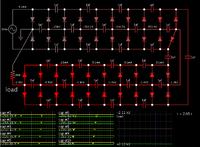doom3cool3
Newbie level 6
Thanks so much
So what kind of capacitor should I choose you think is better? Since the input is from variac and I guess its frequency is 60Hz.
So what kind of capacitor should I choose you think is better? Since the input is from variac and I guess its frequency is 60Hz.
